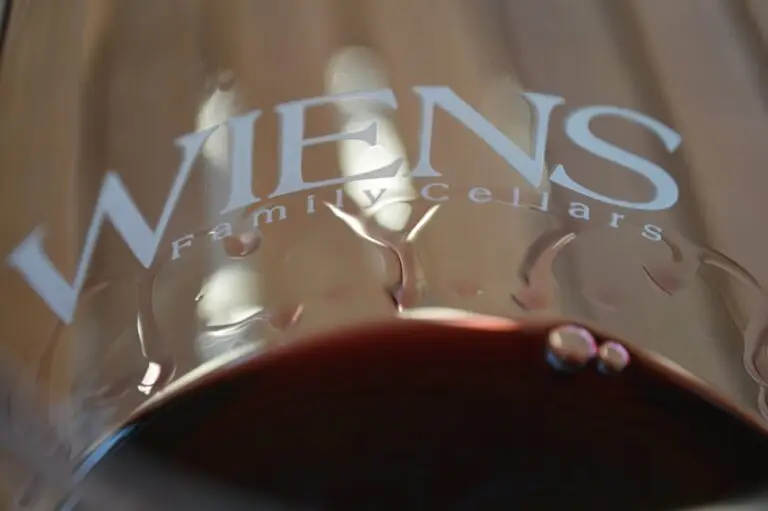Acidity in wine is much more than a mere component of its flavor profile; it is the backbone that imparts freshness, balance, and structure, defining the very soul of the wine. In the realm of winemaking, acidity plays a pivotal role, influencing everything from taste to aging potential, and even the wine’s interaction with food. This exploration of wine acidity delves into its complexities, highlighting why it is considered an indispensable aspect of wine character and quality.
The Basics of Acidity in Wine: A Quick Guide
Understanding the role of acidity in wine is crucial for both winemakers and wine enthusiasts alike. It’s the magic ingredient that can elevate a wine from good to unforgettable. Here are three basic principles that shed light on the importance of acidity in the wine world.
- The Trio of Acid Stars: At the heart of a wine’s acidity lie three main types of acid – tartaric, malic, and citric.
- Tartaric Acid is the most prominent and is a key player in maintaining the wine’s chemical stability and color.
- Malic Acid brings a sharp, apple-like freshness to the wine, which can be softened through malolactic fermentation.
- Citric Acid, though present in smaller quantities, adds a touch of freshness and zest, reminiscent of citrus fruits.
- Acidity’s Balancing Act: The presence of acidity in wine is a balancing force, fine-tuning the interplay between sweetness, alcohol, and tannins.
- Acidity cuts through sweetness, preventing the wine from tasting overly syrupy.
- It complements the alcohol content, ensuring the wine does not feel too heavy or flat on the palate.
- Together with tannins, acidity adds structure and complexity, rounding out the wine’s profile and making it more food-friendly.
- The Essence of Freshness and Drinkability: Acidity is the backbone of a wine’s freshness and vitality.
- It’s what makes your mouth water and prepares it for the next bite of food, making wine an excellent companion to meals.
- Acidity ensures the wine’s longevity, both in the bottle and in the glass, preserving its vibrant character and ensuring drinkability.
In essence, acidity is not just a technical aspect of winemaking; it’s a crucial element that defines the wine’s character, influencing its flavor profile, structure, and overall appeal. Whether savoring a brisk white or a robust red, the journey of each sip begins with understanding the pivotal role of acidity.
Measuring Wine Acidity
The acidity in wine is quantified through measurements of pH and titratable acidity (TA). pH levels indicate the wine’s acidity on a scale, with lower numbers being more acidic, affecting the wine’s color, stability, and susceptibility to spoilage. Titratable acidity, on the other hand, measures the concentration of all acids present, providing insight into the wine’s perceived tartness. Understanding the interplay between acidity, sweetness, and tannins is crucial for achieving balance, with winemakers meticulously adjusting these elements to craft wines of harmonious complexity.
The Impact of Climate on Acidity
Climate plays a significant role in determining the acid levels in grapes, with cooler growing conditions typically preserving higher acidity due to slower ripening processes. Conversely, warmer climates can lead to lower acidity, potentially challenging winemakers to maintain the desired freshness in the wine. The ongoing effects of climate change pose new challenges and opportunities in managing acidity, as shifting temperatures and weather patterns influence vineyard practices and grape characteristics worldwide.
Acidity in White vs. Red Wines
The distinction in acidity levels between white and red wines is a fundamental aspect of their differing taste profiles and is shaped significantly by both the grape’s inherent characteristics and the winemaking process. White wines are typically celebrated for their zesty acidity, which imparts a sense of freshness and vitality, making them particularly appealing in warmer climates or as aperitifs. This heightened acidity is a natural result of the winemaking techniques employed for white wines, which often involve cooler fermentation temperatures and the avoidance of processes such as malolactic fermentation that can reduce acidity. Additionally, white wines are less likely to be aged in new oak barrels, a practice that can introduce compounds into the wine that soften perceived acidity.
In contrast, red wines tend to undergo winemaking processes that can mitigate their natural acidity. The presence of tannins, derived from grape skins, seeds, and stems, as well as oak aging, introduces a structural complexity and body to red wines that can make their acidity seem less pronounced. Furthermore, red wines are more frequently subjected to malolactic fermentation, a biological process wherein tart-tasting malic acid is converted into softer, creamier lactic acid. This not only reduces the wine’s overall acidity but also contributes to the complexity and stability of red wines, adding flavors often described as buttery or creamy.
Balancing Acidity in Winemaking
Acidity is the unsung hero of the wine world, providing the backbone that brings balance, structure, and vibrancy to every bottle. Here’s a concise guide on how winemakers navigate the complexities of acidity from the vineyard to the winery, ensuring every sip delivers perfection.
In the Vineyard: Setting the Stage
- Microclimate Matters: Choosing the right site can influence the grape’s acid levels, with cooler regions promoting higher acidity.
- Sunlight and Shade: Through canopy management, winemakers adjust the vine’s exposure to the sun, directly impacting the grapes’ acidity.
- Harvest Timing: Picking grapes earlier in the season captures higher acidity, setting the foundational flavor profile for the wine.
In the Winery: Fine-Tuning Acidity
- Malolactic Fermentation: This process converts sharper malic acid to softer lactic acid, rounding out the wine’s profile, especially in reds.
- Acidification: Adding tartaric acid boosts acidity in wines from warmer regions, ensuring a lively and fresh character.
- Deacidification: For wines from cooler climates with excessive acidity, winemakers can add substances like calcium carbonate to soften the wine’s sharpness.
Achieving Harmony: The Final Blend
- Balance Is Key: The ultimate goal is to achieve a harmonious balance where acidity complements the wine’s sweetness, alcohol, and tannins.
- Vintage Variations: Each year brings new challenges and opportunities to adjust practices based on the grape’s characteristics and the desired wine style.
The Art and Science of Winemaking
- A Dual Approach: Winemaking requires a blend of scientific understanding and intuitive artistry, where decisions on acidity can transform the wine’s appeal.
- Sensory Experience: Through mastery of acidity, winemakers create wines that express the unique terroir and invite drinkers to explore a world of flavors and textures.
Navigating the nuances of acidity is crucial in crafting wines that resonate with depth, complexity, and character. By understanding and appreciating the role of acidity, winemakers continue to enchant the world with bottles that tell a story of their origin and craft, one sip at a time.
The Role of Acidity in Wine Aging
Acidity is a critical factor in a wine’s aging potential, acting as a preservative that safeguards the wine from deterioration over time. Wines with higher acidity levels generally have a greater capacity for aging, evolving in the bottle to develop deeper flavors and aromatic complexity. The evolution of acidity during this process can transform a wine, revealing new dimensions and nuances with each passing year.
Tasting and Appreciating Acidity
Identifying and evaluating acidity is a skill honed through tasting, with high-acidity wines often leaving a mouthwatering sensation and a crisp finish. This acidity is not only enjoyable in its own right but is also instrumental in food and wine pairings, where it can cut through richness and complement a dish’s flavors. Learning to appreciate acidity is fundamental to understanding wine’s diverse landscape, enhancing the tasting experience.
Acidity and Wine Styles
Acidity influences various wine styles and regions, with certain areas and grapes known for their vibrant acidity. From the zesty Rieslings of Germany to the brisk Chablis of France, high-acidity wines are celebrated for their refreshing qualities and versatility with food. Understanding how acidity shapes different wine styles provides insight into regional winemaking traditions and the global diversity of wine.
The critical role of acidity in wine cannot be overstated; it is a cornerstone of wine’s balance, character, and longevity. For winemakers and wine enthusiasts alike, mastering the complexities of acidity is essential to appreciating wine’s vast spectrum of flavors and traditions. As we continue to explore and understand acidity’s impact on wine, we open ourselves to a world of sensory discovery and the endless potential for innovation in the glass.






